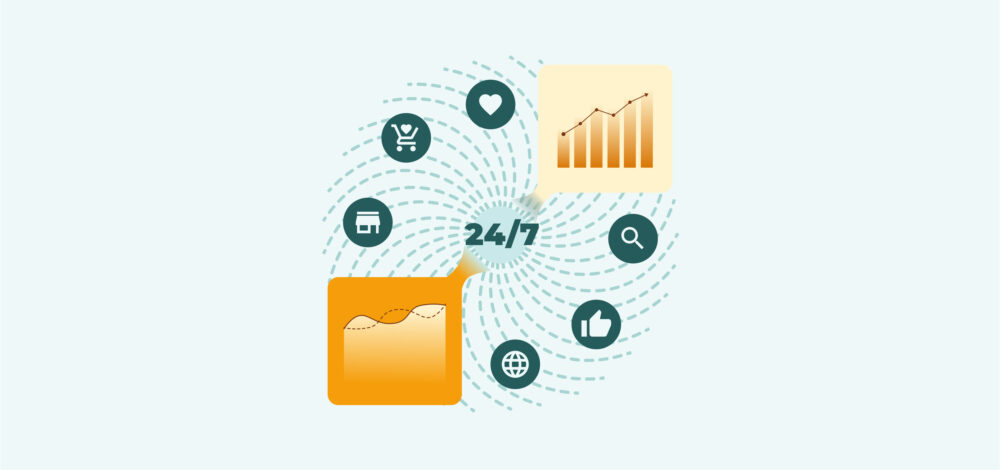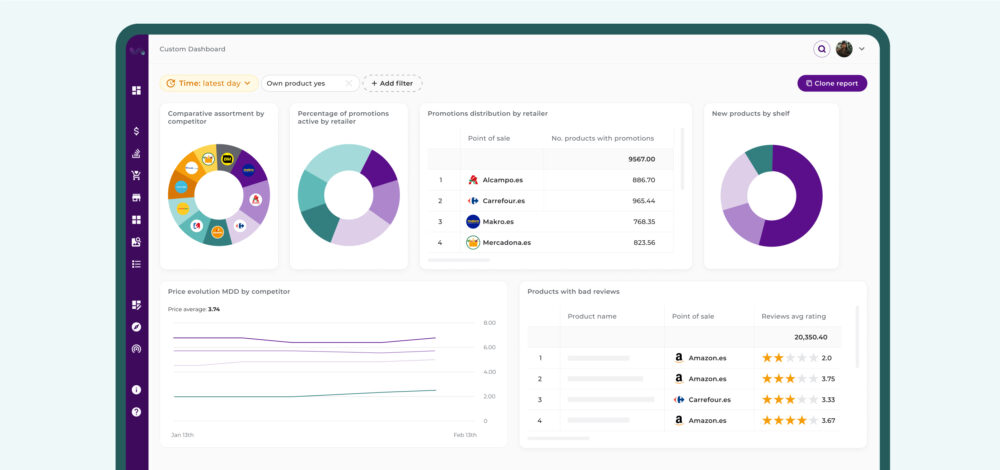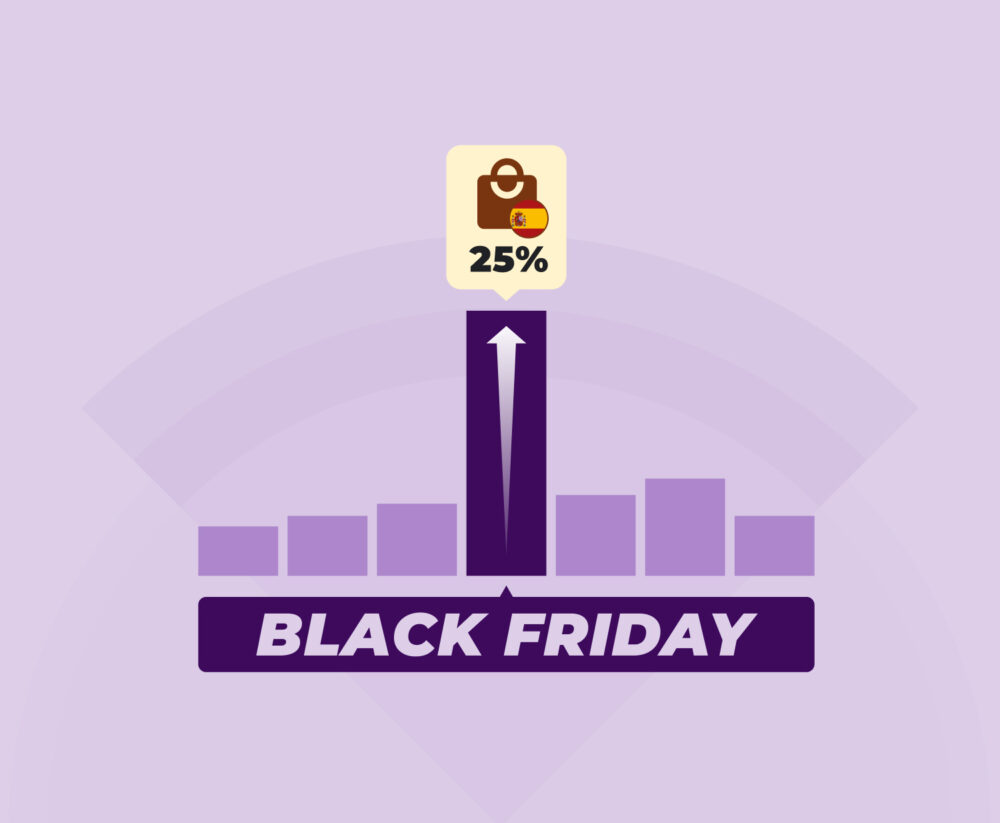Dynamic Benchmarking: how to Gain a Competitive Advantage by Monitoring your Rivals in Real Time
Have you ever spent weeks preparing for a marketing campaign launch? You have the perfect message, the creatives are flawless, and the team is ready. But, just a day before you launch, your main competitor gets in first with an almost identical, but slightly better, offer. All your hard work is undermined. In today’s market, speed is a decisive factor.
For a long time, companies have relied on traditional benchmarking. This consists of quarterly reports or annual analyses that study the competition. The problem is that these reports are a snapshot of a constantly changing landscape.
We need a different approach. One that offers us a motion picture instead of a simple photograph. This is where dynamic benchmarking comes in. It’s a live, continuous, and real-time data-driven approach that allows for proactive, not just reactive, decision-making. It helps you to anticipate, adapt, and lead.
What is Dynamic Benchmarking?
It is a competitive analysis methodology that continuously and automatically monitors the actions, strategies, and results of key competitors. Unlike traditional analysis, this approach provides constantly updated information, allowing for immediate strategic reactions.
The main difference from traditional benchmarking lies in three key aspects:
- Frequency is the first distinguishing factor. While classic benchmarking was carried out monthly or quarterly, dynamic benchmarking works 24 hours a day, 7 days a week.
- Data sources are the second differentiating element. Traditional analysis was mainly based on public reports, market research, and surveys. The dynamic strategy integrates data from multiple digital channels: corporate websites, social networks, sales platforms, mobile apps, and online media.
- The approach is the third major difference. Traditional benchmarking was reactive and descriptive. Dynamic benchmarking is proactive and predictive. It allows you to anticipate competitors’ moves and make pre-emptive decisions.
Real-time data is the fuel that powers this system. Information flows constantly from digital sensors distributed throughout the competitive ecosystem. This data is processed automatically, analysed using intelligent algorithms, and converted into actionable alerts and insights.
The key to success lies in the ability to automatically filter, process, and contextualise large volumes of information. Without this automation, the volume of data would be unmanageable for any human team.
The 4 Strategic Benefits of Dynamic Benchmarking
1. Rapid reaction to market changes
The speed of response can determine the success or failure of a competitive strategy. Dynamic benchmarking drastically reduces the time between a competitor’s action and your own response.
When a rival launches an aggressive promotion or lowers the price of its flagship product, the system immediately detects the price change. The algorithms analyse the potential impact and generate automatic alerts. The sales team can react in a matter of minutes or hours, limiting the rival’s competitive advantage.
This rapid reaction capability is especially valuable in highly competitive sectors such as retail, tourism, technology, or financial services. In these markets, the difference between reacting on the same day or a week later can mean millions in losses.
2. Early detection of opportunities or threats
Continuous analysis allows you to identify patterns and trends before they become serious problems or valuable opportunities are lost. Intelligent systems can detect weak signals that would escape a one-off analysis.
For example, you might notice that a competitor’s customers are complaining en masse about a new software update. This is your opportunity to launch a campaign highlighting the stability of your solution. Or perhaps you observe that none of your rivals are serving a specific market niche. You can be the first to get there.
A dynamic benchmarking system can alert you to the start of a price war. It can also warn you of a reputational crisis affecting a competitor, giving you time to strengthen your own brand message. Identifying these risks early allows you to prepare a solid contingency plan.
3. Continuous optimisation of prices, content, and promotions
Dynamic benchmarking feeds continuous optimisation processes in multiple operational areas. Competitive data is integrated with internal management systems, allowing for automatic or semi-automatic adjustments.
In pricing, algorithms can suggest price modifications based on competitor movements, demand elasticity, and profitability targets. In content marketing, the system can identify trending topics among competitors and suggest content opportunities.
Promotions can be dynamically calibrated according to the competitive intensity of the moment. If rivals are being conservative, you can take the opportunity to gain market share. If they are being aggressive, defensive responses can be prepared.
4. Fostering constant innovation
Innovation doesn’t happen in a vacuum. Observing the successes and, above all, the mistakes of the competition is an inexhaustible source of inspiration. Continuous monitoring of competitive initiatives stimulates internal innovation and forces you to constantly ask yourself: How can we do this better?
Dynamic benchmarking reveals gaps in the market that competitors are not adequately covering. These gaps represent opportunities for innovation and differentiation. It also allows you to identify industry best practices that can be adapted and implemented internally.
Constant competitive pressure, informed by accurate data, creates a culture of continuous improvement and experimentation. Teams develop greater mental agility and adaptability.
What to Watch: Key Metrics for Effective Dynamic Benchmarking
A monitoring system is only useful if you know what data to look at. Therefore, focusing on the right metrics is essential to avoid drowning in a sea of irrelevant information. Below are the most important areas and metrics to track.
Prices and promotions
Prices are one of the most critical and volatile competitive variables. Therefore, monitoring should cover:
- Price changes: Monitor any adjustments to product prices or subscription plans.
- Flash offers and discounts: Receive alerts about limited-time promotions.
- New pricing plans: Identify when a competitor introduces a new service tier, such as a free or premium plan.
- Delivery models: Observe changes in delivery costs or policies in e-commerce.
Product and catalogue
Your rivals’ product decisions reveal their strategic direction. In particular, it is useful to closely track:
- New product or service launches: Be the first to know when they expand their offering.
- Feature updates: Understand what features they are improving or adding to their existing products.
- Stock changes: In e-commerce, knowing when a competitor’s product runs out of stock can be an opportunity.
- Product description modifications: Small changes in the text can indicate new positioning.
Marketing and content
Content strategies reveal competitive priorities. Indeed, your competitor’s communication strategy tells you who they are trying to reach and how. Therefore, it is worth monitoring:
- New advertising campaigns: Monitor the ads they launch on Google, Facebook, Instagram, or LinkedIn.
- Blog content and SEO: Receive notifications when they publish new articles and analyse which keywords they are trying to rank for.
- Social media activity: Track their posting frequency, the type of content they share, and their level of engagement.
- Collaborations with influencers or media: Detect their strategic communication alliances.
Reputation and customer sentiment
The voice of the customer is one of the most honest indicators of a company’s performance. For this reason, you should pay attention to:
- Social media mentions: Set up alerts to know what is being said about your competitors on platforms like X (formerly Twitter) or LinkedIn.
- Reviews on specialised portals: Monitor ratings on sites like G2, Capterra, Google Reviews, or Trustpilot.
- Sentiment analysis: Use tools that classify mentions as positive, negative, or neutral to measure the general perception of your competitor’s brand.
Hiring strategy
Personnel movements reveal future strategic directions. Consequently, new hires in specific areas can indicate plans for expansion, technological development, or entry into new markets.
- New job vacancies posted: Pay special attention to strategic positions.
- Key positions: If a competitor is looking for an “International Expansion Director” or an “Artificial Intelligence Expert”, you have a clear clue about their upcoming priorities.
The Toolbox: Technologies for Implementing your System
Implementing a dynamic benchmarking system doesn’t necessarily require a team of engineers. In fact, nowadays there are numerous tools that make this process easier.
All-in-One Competitive Intelligence platforms
Comprehensive platforms combine multiple functionalities in a single solution. For example, tools like Crayon or Kompyte offer web monitoring, content analysis, automatic alerts, and personalised reporting.
In general, these solutions are ideal for companies looking for a quick implementation without technical complexities. Their main advantage is operational simplicity and a short learning curve.
Custom Market Analytics Solutions
On the other hand, for companies that need to go a step beyond standard platforms, there are comprehensive solutions like flipflow. This tool works as an almost bespoke market analytics service, combining the power of real-time web scraping to extract any public data from the web, with the flexibility of a powerful BI to integrate that intelligence directly into your internal systems or dashboards.
It’s the ideal option for businesses that need to monitor very specific metrics—such as a competitor’s stock, subtle changes to their catalogue, or dynamic price fluctuations—with a granularity and precision that more generalist tools can’t always offer.
Social Listening and Mention Tools
Brandwatch, Hootsuite Insights, and Mention allow you to monitor conversations, sentiment, and trends on social media. These tools are essential for understanding competitive brand perception.
In addition, their advanced features include influencer analysis, detection of emerging crises, and Share of Voice comparisons between competitors.
Price Monitoring
If you operate in e-commerce, tools like Price2Spy or Prisync are designed to track the prices of thousands of products in your competitors’ shops and alert you to any changes.
These platforms also often include APIs for integration with internal systems and dynamic pricing algorithms. They are essential for sectors where price is a critical competitive factor.
News Alerts and Aggregators
Google Alerts, Talkwalker Alerts, and similar tools allow you to monitor brand mentions in traditional and digital media. These tools are useful for detecting press releases, product launches, and media coverage.
Finally, aggregators like Feedly or Flipboard help to centralise information from multiple sources in personalised dashboards.
Conclusion: Act, Don’t Just React
Dynamic benchmarking allows you to go from being a spectator who analyses the past to becoming a proactive player who shapes the present of your market. The ability to detect competitors’ moves in real time gives you the power to anticipate, protect your business, and discover opportunities that others overlook.
Information has always been power, but in the digital economy, the speed at which you access and act on that information is what truly gives you a competitive advantage. The market waits for no one, and inaction has become the riskiest decision of all.






